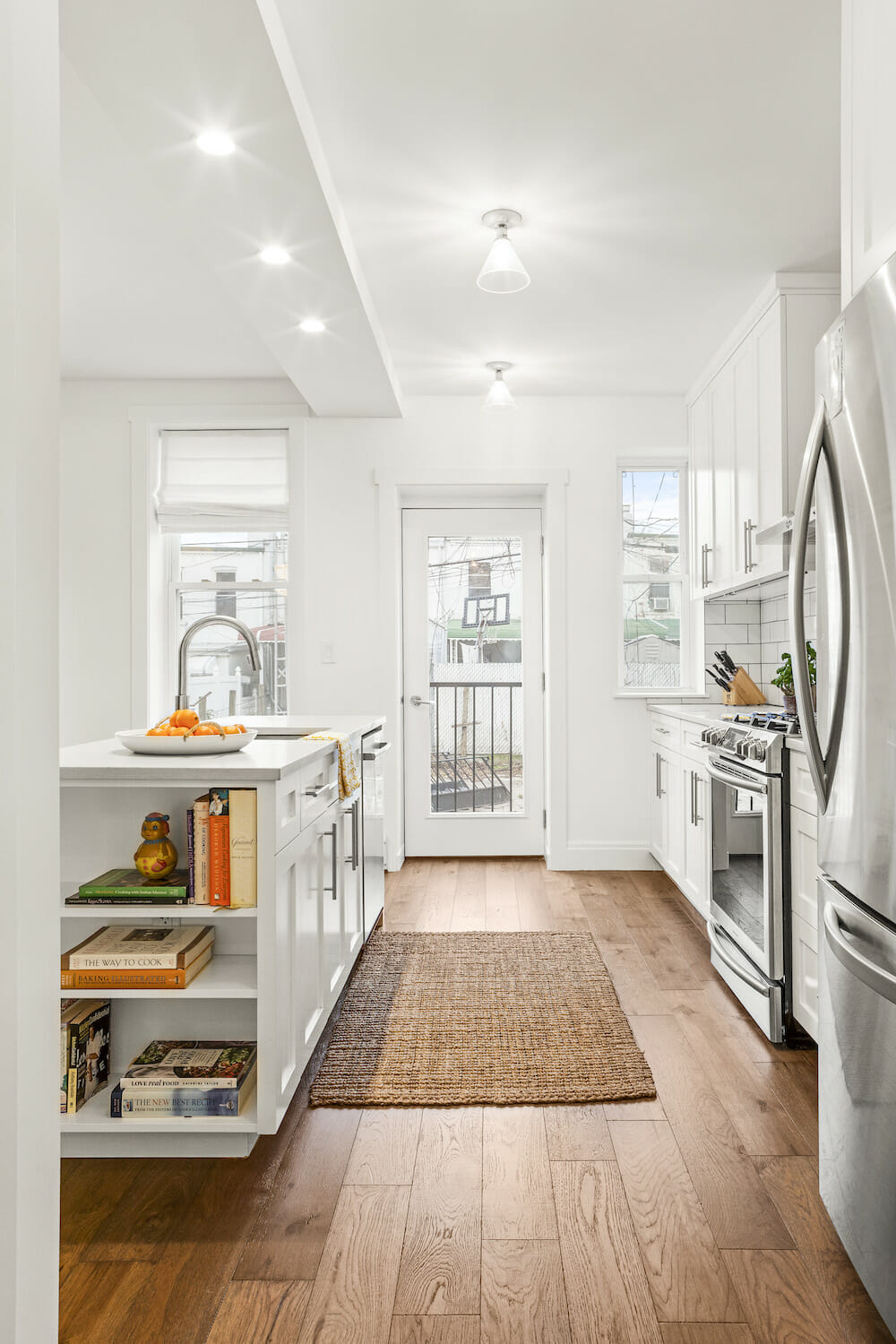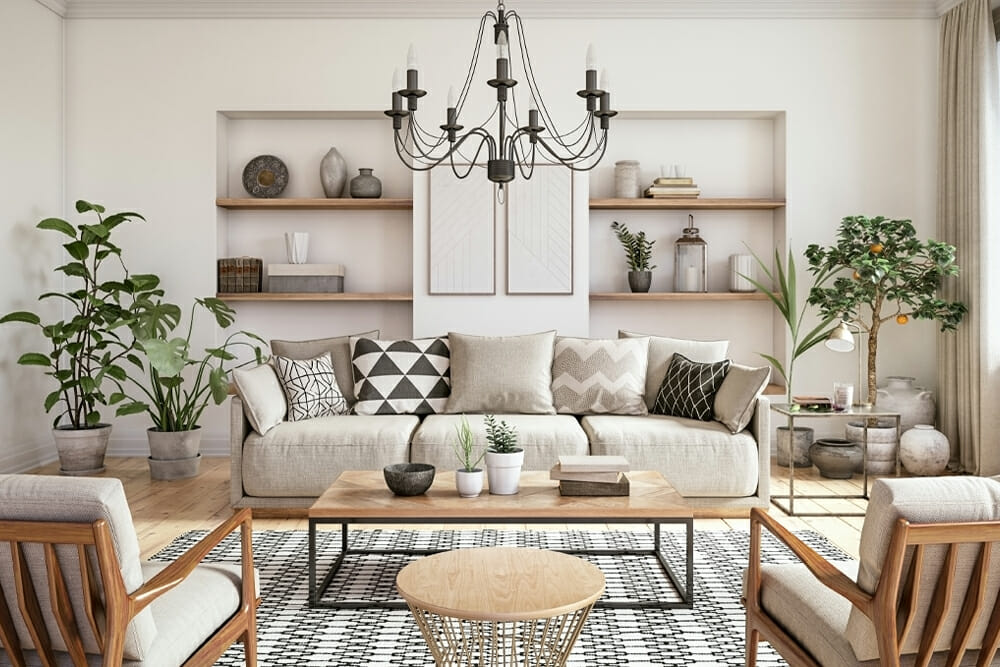Buying and Renovating Townhouse Apartments
Townhouse renovation basics, from surveying site conditions and financing options to bringing in the pros at the right time
Chances are that once you find the right townhouse (good bones, ideal location, right price) in New York City, the space is going to need some work. After all, many of these houses—particularly classic brownstones—date back to the late 1800 and early 1900s. Sweeten, a free service that matches homeowners with vetted general contractors, spoke to Sweeten’s founder and CEO, Jean Brownill, and Chris Halliburton, associate broker of investment sales at Compass, to put together a comprehensive guide about the questions to ask before you buy and how to get started on your townhouse renovation plan once the papers are signed, sealed, and delivered.
If you’re looking for a townhouse to renovate, you probably already have an idea of the kind of home and lifestyle you’re looking to create. Perhaps you’re tired of neighbors stomping above you and dealing with your restrictive co-op board, or you are drawn to the dream of owning your very own roof terrace and backyard—aren’t we all? Or maybe you’d also like rental income to offset the cost of home ownership, or you’re an investor looking to maximize rental income. Whatever your motivations, your townhouse renovation search should be narrowed to the properties that will allow you to create the lifestyle you’re looking for. Here are the questions to ask during your search.
This is where you gather information about the soundness of the property. New York City’s Department of Buildings (DOB) has a great site where you can look up the history of the property and see the violations, complaints, as well as applications and permits for prior work done to the property.
Look for red flags, and use the information to determine whether prior work—especially structural changes or alterations to the plumbing, electrical, and mechanicals—has been executed properly. Property Shark is another place where you can access comprehensive, publicly available information about the property in question.
Many townhouses are on lots much larger than the current building footprint. For example, brownstones are often on 100-foot lots, but the building itself may only be 20’ x 35’. Chris explains that these properties can often be built back with extensions ranging from ten to 30 feet long, depending on the floor area ratio (FAR). The FAR is determined by the zoning designation, and in New York City, the Zoning Resolution designates ten residential districts. For example, a lot that is 20’ x 100’ in an R7-2 zone that has a FAR of 3.44 allows you to put up a 6,880-square-foot building.
You may also be able to expand vertically. This is almost always a given, Chris says, although you may be constrained by landmark preservation requirements (see below). Similarly, you should explore excavation possibilities for creating a cellar. While below-grade space is not counted in the square footage, it is often useful to add space below for mechanicals or storage, even if it is not livable. By storing these elements underground, you can free up space above grade to maximize your living space and/or rental income potential.
In addition to the information that you gather via city databases, pay attention to the existing conditions of the building. Are there signs of water damage, mold, or termites? Also be aware of outside forces beyond an owner’s control—is there a lot of ongoing or planned construction in the area?
If there is an empty lot next door, find out what is happening there. Chris points out that the construction of tunnels for the Second Avenue subway expansion was a major issue for surrounding properties, not only in terms of noise and inconvenience but also with structural damage related to shifting foundations.
Is it currently a single-family dwelling that you intend to turn into a two-family? Or vice-versa? Be prepared to hire an architect if so. Sweeten brings homeowners an exceptional renovation experience by personally matching trusted general contractors to your project, while offering expert guidance and support—at no cost to you. The Landmark Preservation Commission is New York City’s governing agency for preserving buildings and sites that are culturally, historically, and architecturally significant. Many brownstone townhouses happen to be in designated historic districts—there are a total of more than 36,000 landmark properties in 141 historic districts and extensions throughout the five boroughs, according to the LPC’s website.
If the townhouse you’re considering is protected, you will need to submit any planned changes to the LPC for review at the same time that you submit plans to the DOB. Chris explains, “Anything that the LPC approves will be approved 99 percent of the time by the DOB. But it’s not the case vice versa.” In particular, any changes to the façade will be scrutinized by the LPC. For example, while a back extension will not affect the view of the building from the street, adding floors will. If you want to add to the top of the building, you may be required to start 20 feet back from the front of the building, so that the additional floor can’t be seen from the street.
An LPC review will add extra time to your townhouse renovation, so this should be a consideration, especially if you are looking to bring in rental income on a deadline.
Obtaining financing for a townhouse purchase and renovation is essentially the same process as a condo purchase and renovation (co-ops are the outlier here). This is because a townhouse, like a condo, is real property. You can consult this Sweeten guide on financing home renovations. If you are financing both the purchase of the property as well as the renovation, you have a few options (Jean advises consulting a professional to see what’s best for your situation).
OR
When searching for a townhouse to renovate, it’s important to gather the experts who will not only help you get the job done right, but who can help you assess whether it’s a project worth tackling in the first place.
For this reason, you’ll need to line up several professionals early on, including structural engineers, electricians, and plumbers. Chris suggests that you bring these pros in for site visits prior to signing the contract so that you don’t “end up buying a money pit.” He estimates that you could have all these consultations done for roughly $1,500 to $2,000.
When it comes to general contractors, Jean understands firsthand the importance of having a professional you can trust. “When I started to renovate my own Brooklyn brownstone, I ended up hiring the wrong general contractor,” she said. “If I can make a wrong choice, anyone can.” She started Sweeten to help homeowners find licensed and vetted contractors and to ultimately renovate fearlessly to create a home they love.
Many thanks to Chris Halliburton of Compass for his insights on buying and renovating a townhouse.
—
Found a home you love and that you’re ready to renovate? Here’s how to find a general contractor for the job.
Sweeten handpicks the best general contractors to match each project’s location, budget, and scope, helping until project completion. Follow the blog for renovation ideas and inspiration and when you’re ready to renovate, start your renovation on Sweeten.
A townhouse is a common style of housing in cities and suburbs. Townhouses tend to be multi-floor units with private entrances. Townhouses share one or more walls with adjoining townhouse units; which differentiates them from single-family homes. Townhouse units may have small front or back yards, balcony spaces, or covered porches.
A “condo” (short for condominium) is a style of housing usually located within a community of buildings owned by individuals. A “condo” community may have shared amenities like a gym, pool, garden, or adhere to rules set by an HOA. A townhouse is a style of home; generally multi-floor with shared walls with other townhouses. If a townhouse is located within a community of similar homes, it may qualify as a condominium.

Questions to Ask During Your Search for a Townhouse
1.) What’s the building’s history?

2.) What’s the actual square footage versus the buildable square footage?

3.) What are the existing conditions?
Renovate expertly with Sweeten
4.) Is the property landmarked or in a historic district?

Financing Your Townhouse Renovation
(Above) Nazli and Larry’s brownstone renovation
Who You’ll Need On Your Team
Sweeten can match your townhouse renovation project with expert contractors in your area!












